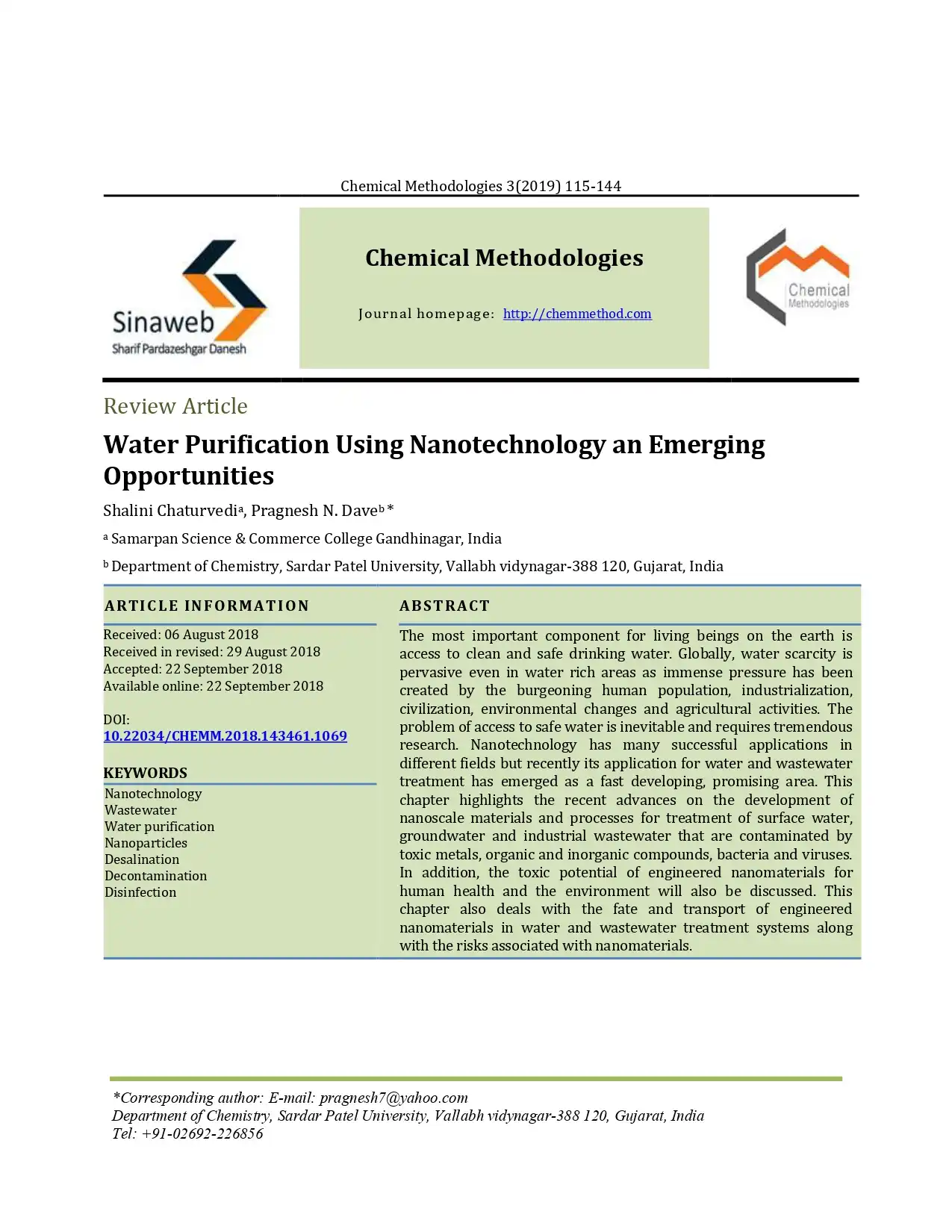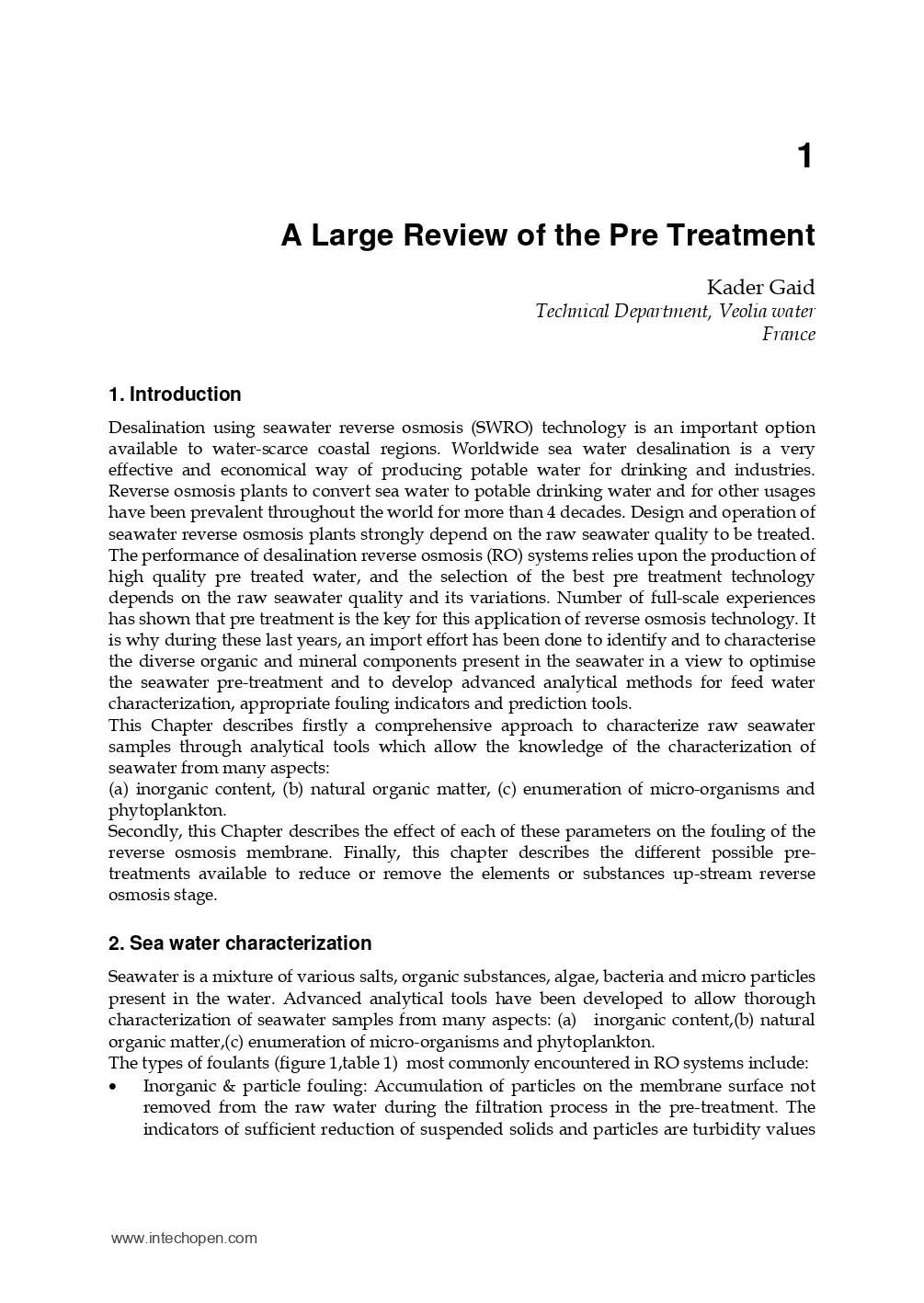Water Purification Using Nanotechnology an Emerging Opportunities
Water Purification Using Nanotechnology
Source : http://www.chemmethod.com/
Author : Shalini Chaturvedi, Pragnesh N. Dave
Abstract : The most important component for living beings on the earth is access to clean and safe drinking water. Globally, water scarcity is pervasive even in water rich areas as immense pressure has been created by the burgeoning human population, industrialization, civilization, environmental changes and agricultural activities. The problem of access to safe water is inevitable and requires tremendous research. Nanotechnology has many successful applications in different fields but recently its application for water and wastewater treatment has emerged as a fast developing, promising area. This
chapter highlights the recent advances on the development of nanoscale materials and processes for treatment of surface water, groundwater and industrial wastewater that are contaminated by toxic metals, organic and inorganic compounds, bacteria and viruses. In addition, the toxic potential of engineered nanomaterials for human health and the environment will also be discussed. This chapter also deals with the fate and transport of engineered
nanomaterials in water and wastewater treatment systems along with the risks associated with nanomaterials.
Only logged in customers who have purchased this product may leave a review.
Related products
Adsorbent Material Used In Water Treatment-A Review
Adsorbent Material Used In Water Treatment-A Review
Removal of Aluminium from Drinking Water
Removal of Aluminium from Drinking Water
Biofilm Control Study
Biofilm Control Study
Inorganic Contaminant Removal
- Inorganic contaminant treatment selection considerations
- Advanced inorganic contaminant removal chemistry terminology
- Advanced inorganic contaminant removal chemistry explanations
- Conventional filtration and how it relates to inorganic removal
- Detailed information on treatments for iron and manganese removal
- Detailed information on treatments for hardness removal
- Detailed information on inorganic contaminant monitoring protocols
- Detailed tables on the following topics:
- Sources of 26 inorganic contaminants
- Common secondary standards with effects, inorganic contributors and indications
- Various treatment technology options to consider for 24 inorganic contaminants
- Potential forms of iron and manganese
- Iron and manganese sampling procedures
- Iron and manganese oxidant selection criteria
- Iron and manganese theoretical (initial) dosing criteria
- Potential treatments for less common inorganics
- Potential treatments for miscellaneous trace metals
Inorganic Contaminant Removal
- Inorganic contaminant treatment selection considerations
- Advanced inorganic contaminant removal chemistry terminology
- Advanced inorganic contaminant removal chemistry explanations
- Conventional filtration and how it relates to inorganic removal
- Detailed information on treatments for iron and manganese removal
- Detailed information on treatments for hardness removal
- Detailed information on inorganic contaminant monitoring protocols
- Detailed tables on the following topics:
- Sources of 26 inorganic contaminants
- Common secondary standards with effects, inorganic contributors and indications
- Various treatment technology options to consider for 24 inorganic contaminants
- Potential forms of iron and manganese
- Iron and manganese sampling procedures
- Iron and manganese oxidant selection criteria
- Iron and manganese theoretical (initial) dosing criteria
- Potential treatments for less common inorganics
- Potential treatments for miscellaneous trace metals














Reviews
There are no reviews yet.